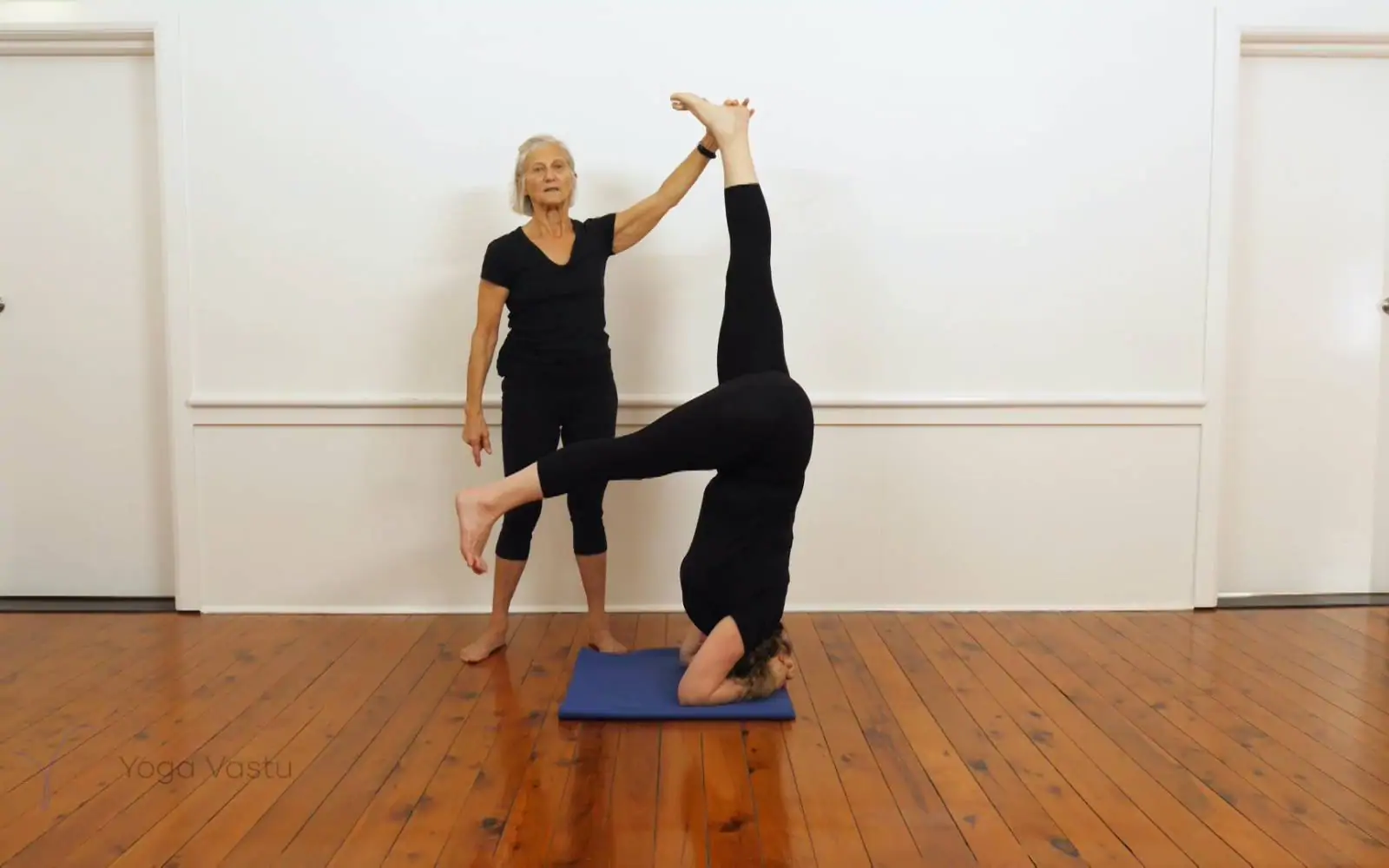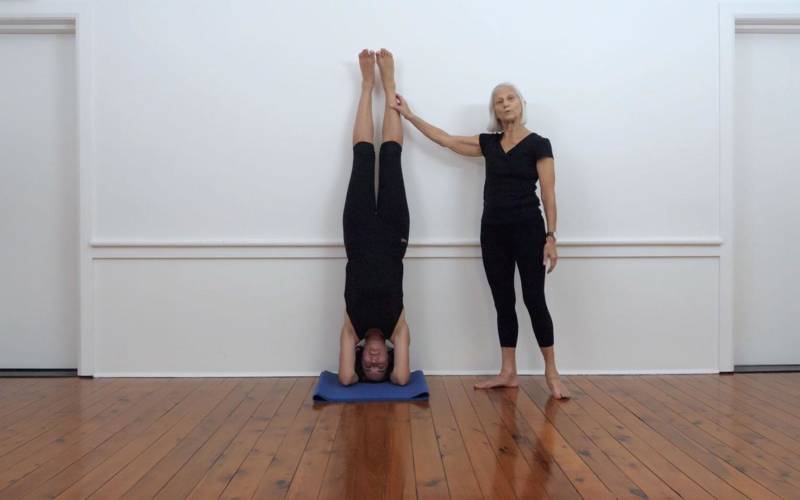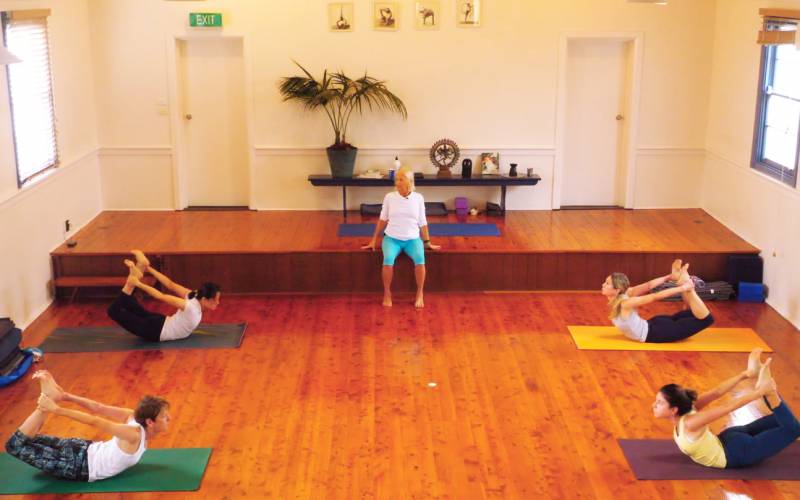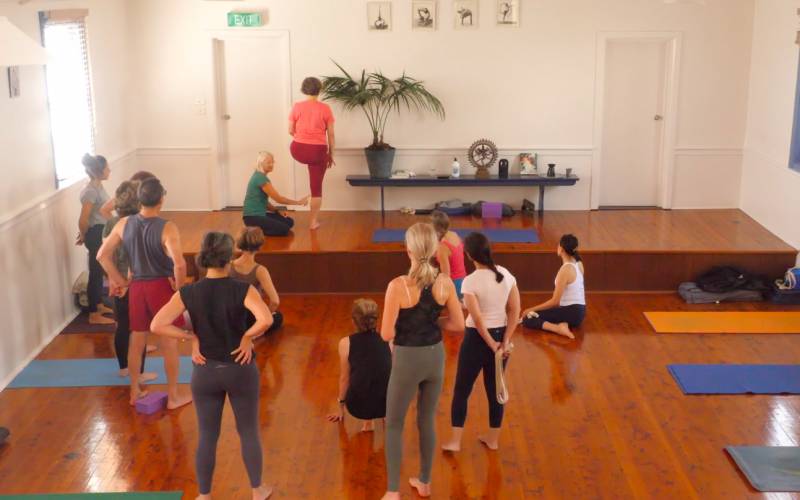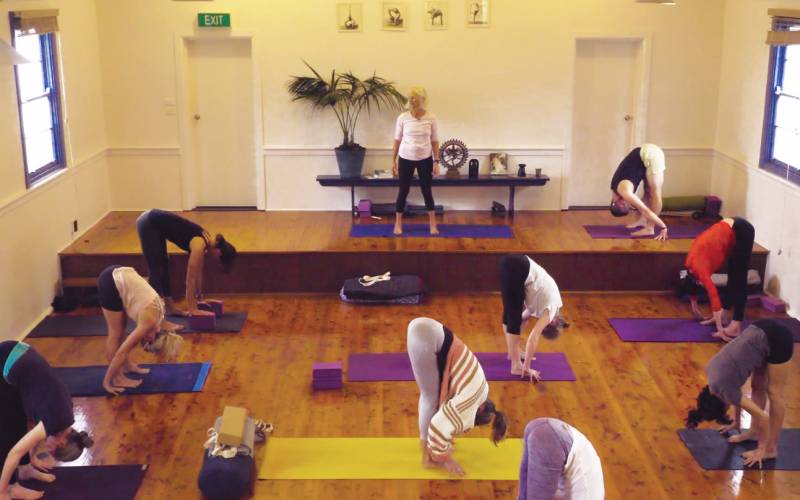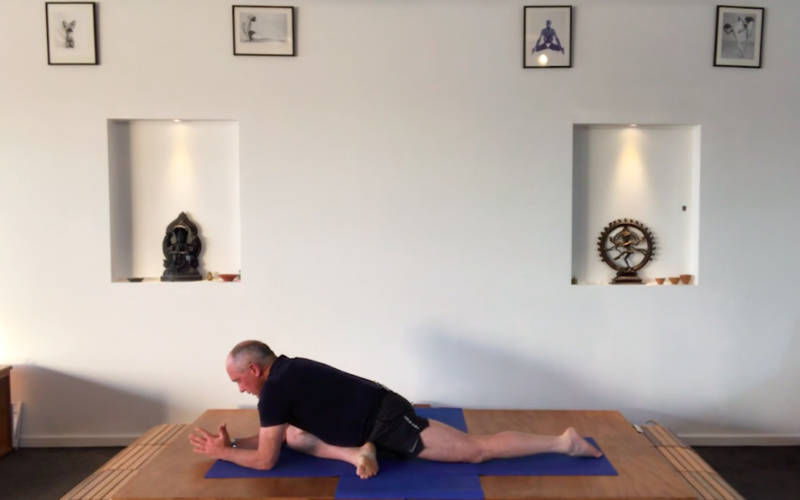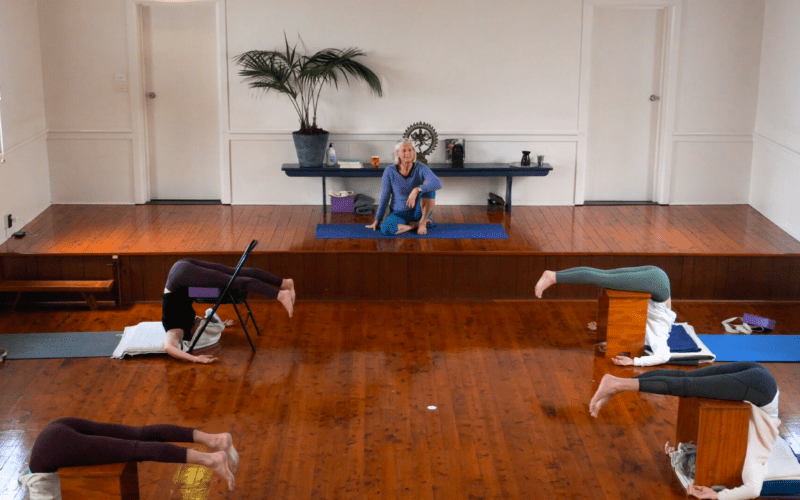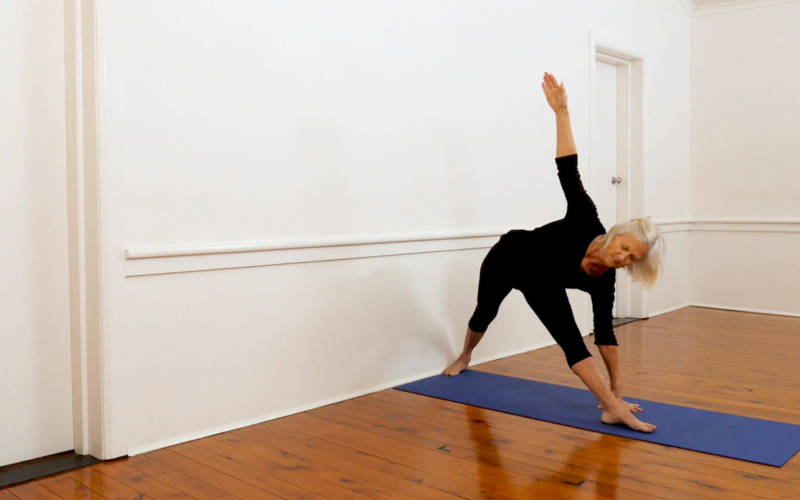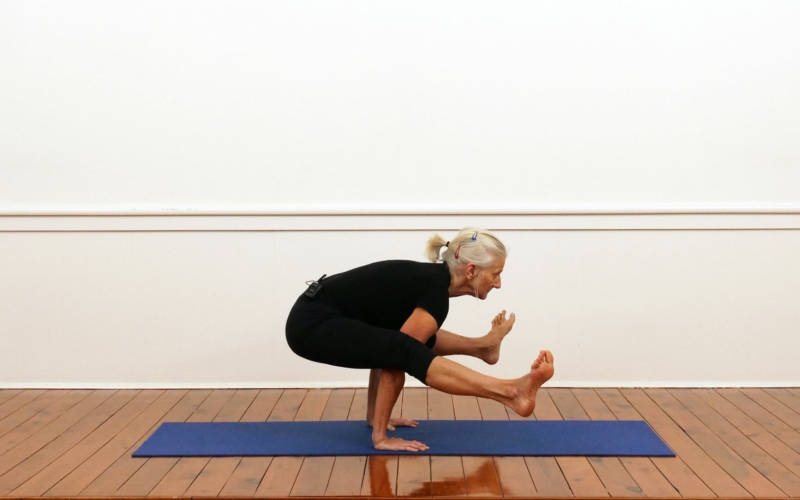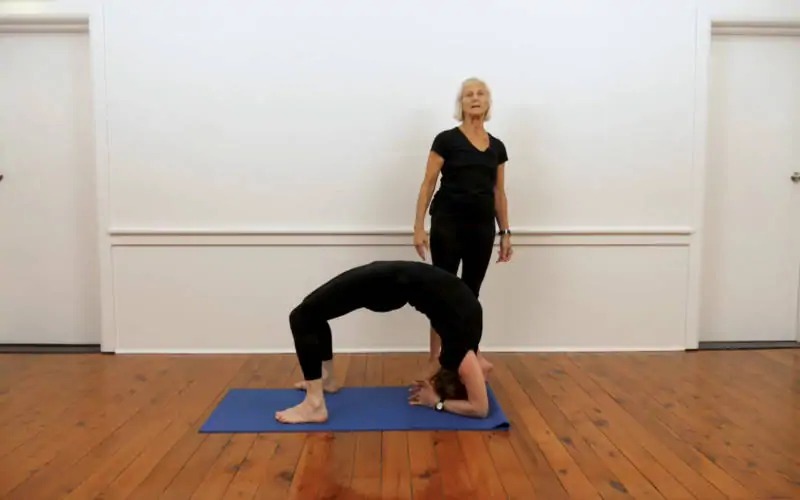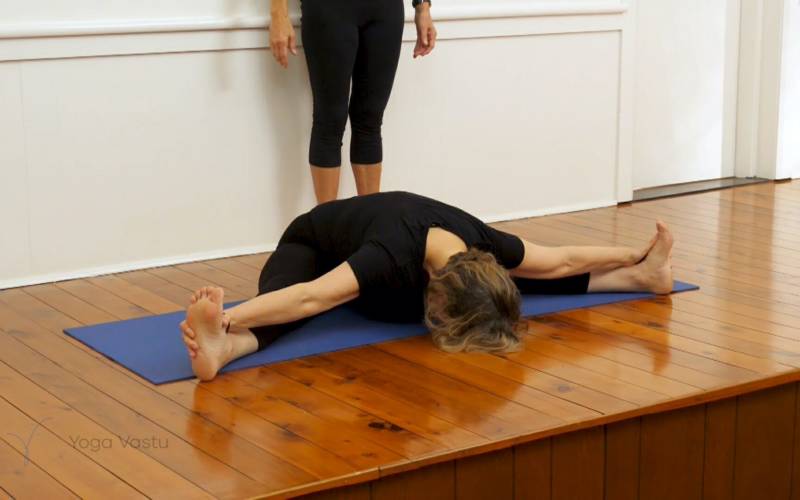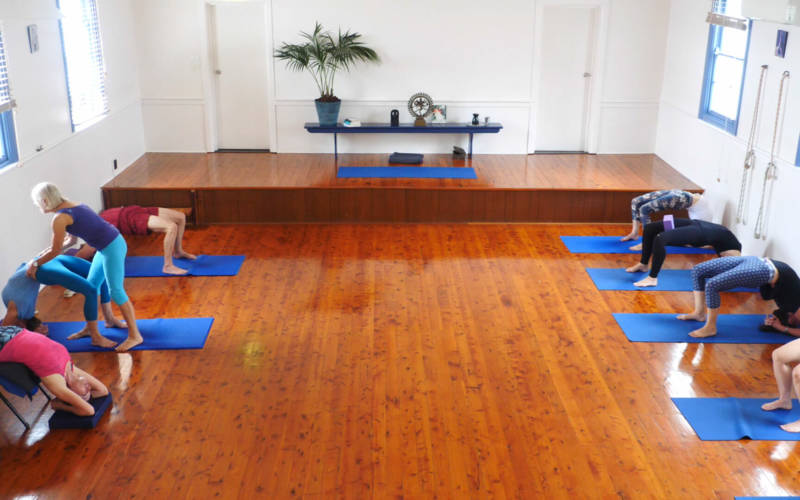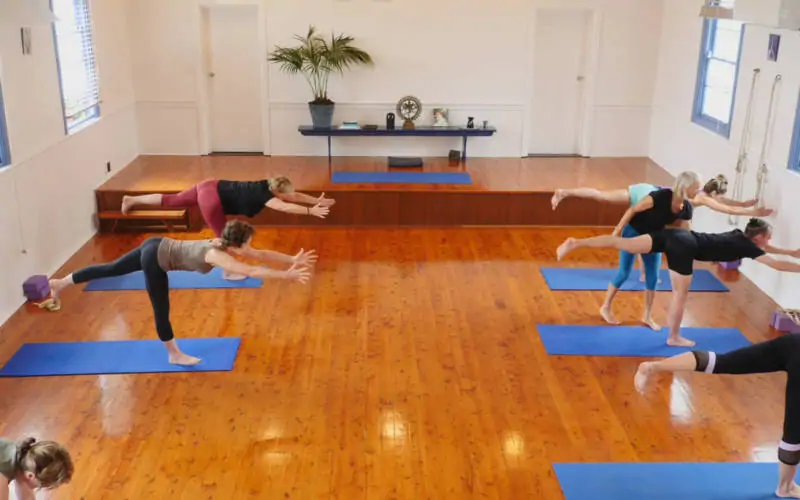How to perform One-Legged Headstand Pose
Start in Sirsasana and bring one leg down to the floor. The other leg stays lifted and steady.
What is Eka Pada Sirsasana?
This is an asymmetrical, one-legged variation of Salamba Sirsasana. Though it might look like a more stable balancing pose since the foot provides an extra point of contact with the floor, performing it correctly actually takes extra effort from the practitioner.
You start in Sirsasana and slowly, with control, keeping the raised leg steady and straight, begin to lower the other leg down. This requires a significant amount of abdominal strength and flexibility in the hamstrings. A good way to develop this level of flexibility is by practicing the more supported hamstring poses, such as Utthita Hasta Padangusthasana (to the wall) or Supta Padangusthasana.
When to use Eka Pada Sirsasana?
Just like Eka Pada Sarvangasana follows Salamba Sarvangasana, this one-legged variation of Sirsasana comes after the full pose has been maintained for a few minutes. This way you will have a chance to work on your core and sense of stability while also learning to come out of this inversion with control, step by step.
Just like with Salamba Sirsasana, once the pose becomes established in the practitioner, it has a mentally clarifying effect. It is said to sharpen concentration and focus. The blood supply to the whole body is affected, by virtue of the inverted nature of the pose. The tissues of the brain, and important glands like the pituitary, are thought to be benefited by this posture.
The additional benefit of this asymmetric variation of Sirsasana is that it helps you pinpoint the difference between the two sides of your body. It also strengthens the core and extends the hamstrings.
Keep in mind that postures from the Sirsasana and Sarvangasana families are to be avoided or approached with extra care if you suffer from chronic dizziness or high blood pressure. If you do indeed suffer from the aforementioned conditions, instead of going straight into any pronounced inversion, prepare yourself mentally and physically. This can be done by assuming milder inversions, such as Setu Bandha Sarvangasana or by performing a forward bend sequence consisting of Paschimottasana, Uttanasana, and Adho Mukha Svanasana. To avoid dizziness after completing the inversion, assume a neutral pose such as Virasana. This will let you ground yourself and reconnect to your breath.
